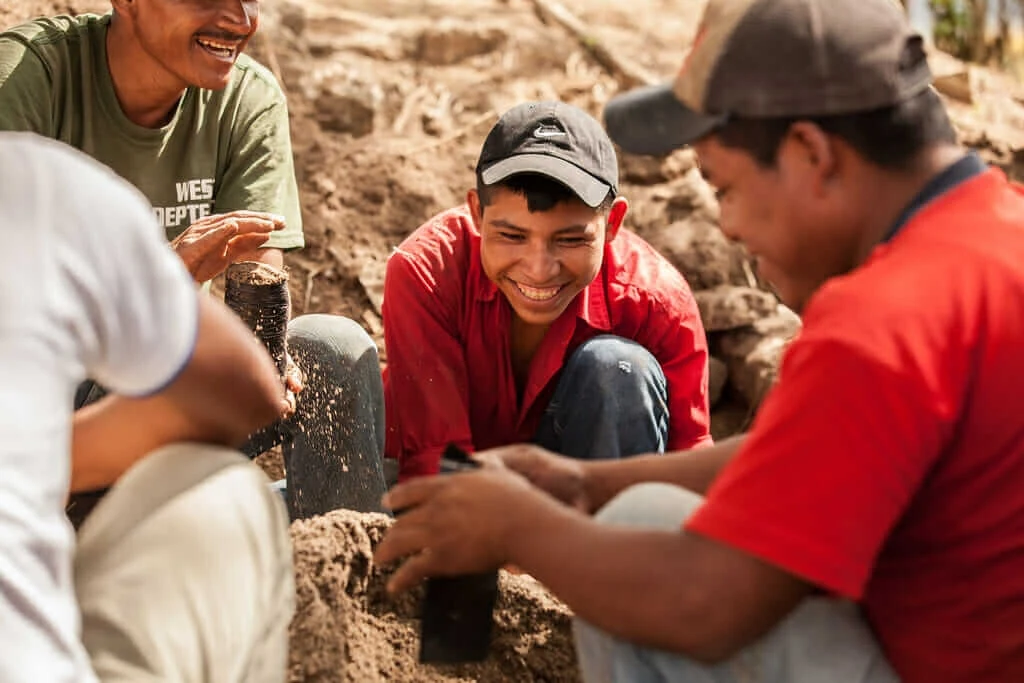& Construction

Integrated BIM tools, including Revit, AutoCAD, and Civil 3D
& Manufacturing

Professional CAD/CAM tools built on Inventor and AutoCAD
Summer means swimming pools and sunburns, ice-cream cones and sprinklers, lemonade and baseball games. Unfortunately, summer also means mosquitoes.
Their buzzing and bites make mosquitoes irritating. The bloodthirsty bugs aren’t just nettlesome, however. Due to mosquito- and waterborne illnesses like cholera, malaria, West Nile virus, encephalitis, and yellow fever (the latter of which is currently a fast-spreading outbreak in Angola), they also can be noxious.
Case in point: Zika, a mosquito-borne virus that recently spread to the Americas from Africa and Asia. Since the first report of Zika in Brazil in May 2015, the virus has spread to at least 33 countries and territories, including Mexico, Costa Rica, and Puerto Rico.
“The greatest concern is for pregnant women,” says infectious disease specialist Dr. Aaron Glatt, a spokesperson for the Infectious Disease Society of America and chair of medicine at South Nassau Communities Hospital in Oceanside, New York. “It looks like there is a risk of transmission of the virus from mothers to babies that can lead to very serious complications in the fetus.”
Because there’s no vaccine or treatment, avoiding mosquito bites is the best defense against Zika. Which begs the questions: Is there a role for design in public health, and can design help with infectious disease prevention?
“Zika isn’t going to be treated solely with mechanical answers; the treatment of this is going to have to be medical as well,” Glatt says. “That said, transmission of the virus can be prevented if you’re not bitten by mosquitoes. In that respect, technical barriers that offer better protection could be critical.”
The following innovators have pioneered such protection. Their work offers a glimpse at how design and design thinking could help medical authorities address public-health concerns like Zika and aid in infectious disease prevention.
Canadian entrepreneur Matt Kostanecki, co-owner of GoGadgety Inc. (which sources gadgets for companies like Groupon), began looking for a better mosquito repellent in 2014 at the request of his business partner’s parents.
“They have a cottage by the lake and like to go on evening walks, but they would have to cut them short because they’d get eaten alive,” recalls Kostanecki, who was interested in an all-natural alternative to the chemical DEET, which is considered the most effective mosquito repellent available, but has questionable safety ratings. “We spent a few months doing research and found that most of the natural products on the market don’t actually work.”
Kostanecki subsequently developed Invisaband, a microfiber bracelet that gradually releases geraniol, an essential oil derived from geraniums that hinders mosquitoes’ ability to detect, and therefore bite, humans. “There are other products out there that use geraniol, but they put it into a silicone or plastic bracelet that is not the best medium for releasing it,” says Kostanecki, who launched Invisaband in August 2014 with an Indiegogo campaign that raised $12,000. “We decided to use a microfiber material that would slow-release the essential oil as you wore it.”
Although regulations prevent him from marketing Invisaband as a health product, Kostanecki says orders have skyrocketed because of Zika. One reason why, he theorizes, is that medical research moves slowly; because they’re born of necessity, however, design-driven products like Invisaband can address practical needs rapidly. “Designers solve problems,” he says. “We’re a lot more agile.”
Seattle-based travel clothier ExOfficio shares Kostanecki’s design philosophy, according to General Manager Brian Thompson. “A lot of brands think about the ‘what’ of what they do: ‘We make shirts, or cars, or coffeemakers.’ But people don’t buy what you do; they buy why you do it,” he explains. “We believe in a ‘why’ state of mind.”
ExOfficio’s “why” is “the magic of travel.” It doesn’t design clothes; it designs clothes that make it easier for people to discover the world around them. “We think it’s great when people travel the world because it opens their minds and allows them to learn about themselves and other people,” Thompson says. “The way we encourage that is by making apparel and gear that’s purposely designed for people who are out exploring the world . . . We solve the real problems people face when they travel so they can focus on having amazing experiences.”
The company’s BugsAway clothing is an ideal example. Through a partnership with Insect Shield, the clothes are treated with an odorless insect repellent called permethrin that provides protection from bugs potentially carrying disease, including flies, ticks, and mosquitoes.
“That’s a big design challenge because anytime you’re looking at adding a treatment to the materials you’re using, you have to think through a lot of different factors, like how the treatment affects the comfort of the garment,” Thompson says. “Because you want the consumer not only to buy the product but to wear it.”
Although diseases such as Zika and malaria are not transmitted via water, they are transmitted by mosquitoes that lay eggs in and around standing water. Meanwhile, many waterborne diseases, such as hepatitis and cholera, are the cause of 1.5 million deaths each year.
For that and many other reasons, Denver-based nonprofit Water For People is on a mission to develop high-quality drinking water and sanitation services in at-risk communities around the world.
It achieves its goal by leveraging design at a local scale, according to Director of Program Quality Kelly Latham. “Starting from design, we facilitate the development of water systems that are aligned to the unique needs, resources, and capacity of each community,” she says. “Consequently, the types of designs that are implemented vary greatly from simple community hand pumps in Malawi to large community-piped schemes with household connection in Latin America.”
Such projects would not be possible without good design. “Water is a public-health issue that requires design in a very direct way,” Latham says. “A water system can only be constructed after a design is developed. In addition, our design approach allows for a more collaborative framework that includes stakeholder feedback and participation at various stages, which is essential when addressing a public-health need.”
In Latham’s opinion, that collaborative framework is what design uniquely contributes to public-health dialogues. “It is core to our strategy to keep a small footprint in order that local communities, businesses, and government agencies have the opportunity to grow and provide universal, lasting services to their citizenry,” she says. “This requires that we leverage ideas, experience, finance, and design to advocate for a model that will catch fire with political leaders, as well as markets.”
It’s like ExOfficio’s philosophy of making products people want to use, but on a municipal scale. “Good design lets us anchor water and sanitation services with infrastructure that is low-cost, terrain-appropriate, sustainable, and attractive,” Latham says.
Design can’t cure disease. Clearly, however, it can help fight it.
Matt Alderton is a Chicago-based freelance writer specializing in business, design, food, travel, and technology. A graduate of Northwestern University's Medill School of Journalism, his past subjects have included everything from Beanie Babies and mega bridges to robots and chicken sandwiches. He may be reached via his website, MattAlderton.com.
PD&M
Courtesy of WeRobotics
PD&M
Executive insights








